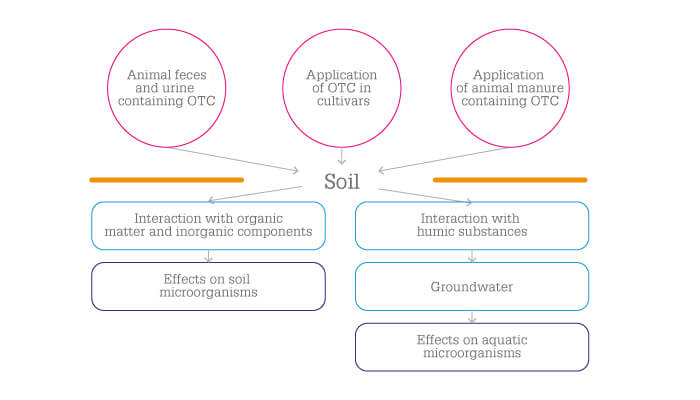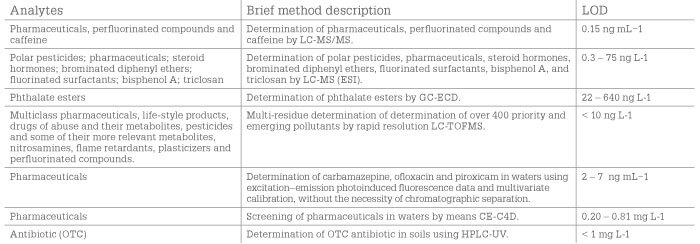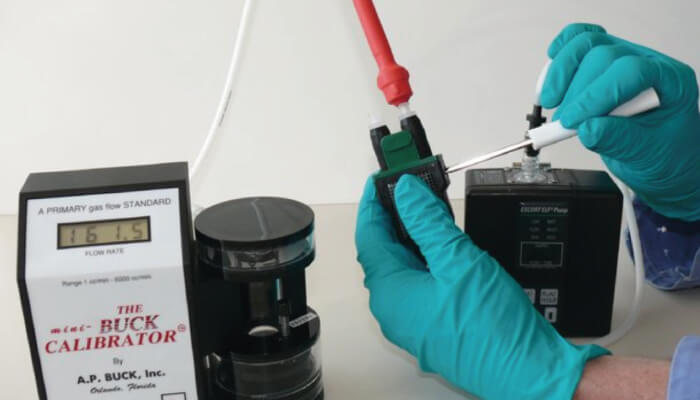A huge number of chemicals have been introduced into our society during the last 200 years as the result of human activities, and we’re not entirely sure of the toxicological impact on human/animal health and for the environment. However, over the last few decades, we have seen the establishment of legislation and monitoring of hazardous substances in the environment (for example, pesticides, oil derivatives, metals and ions) – more recently, there has been concern about emerging pollutants (EPs).
In a broad sense, EPs can be understood as any synthetic or naturally-occurring chemical, or any microorganism, that is not commonly monitored or regulated in the environment but has known or suspected adverse ecological and human health effects. These pollutants mainly include chemicals found in pharmaceuticals, personal care products, pesticides, industrial and household products, metals, surfactants, industrial additives and solvents. Many of them are used and released continuously into the environment, even in very low quantities – and some may cause chronic toxicity, endocrine disruption in humans and aquatic wildlife, and the development of bacterial pathogen resistance (1).
Scientific knowledge of the potential risks posed by EPs to human and ecosystem health is still very scarce, as is our understanding of their presence in water resources and wastewater, and their pathways and accumulation in the environment. What are the limits, and what are the best strategies to avoid or to remedy their presence? Most EPs are not regulated in environmental, water quality and wastewater discharge regulations; hence, there is an urgent need to strengthen scientific knowledge and adopt appropriate technological and policy approaches to monitor these species in the environmental matrices, assess their potential risks, and prevent and control their disposal – mainly to water resources and the environment (1).
EPs are commercially available and easy to purchase, which increases their environmental risk. Several sources imply a high pollutant input onto environmental matrices. Water and wastewater are the main destination for EPs in the environment – although soil, groundwater and air are all affected too. Seawater is also the destination for microplastics as well as sewage from the cities.
Ecology and ecotoxicology
The presence of EPs has an undoubted influence on the environment and human health, which presents the toxicological and ecotoxicological impact of some EP molecules. The aquatic environment may contain pharmaceuticals, hormones, perfluorinated compounds, by-products of drinking-water disinfection (beautifully outlined by Susan Richardson), sunscreens or UV filters, benzotriazoles and naphthalenic acids – all of which have toxicological/ecotoxicological implications (6).

- Pharmaceuticals: antibiotics, anti-inflammatories, analgesics, psychiatric drugs, lipid regulators, β-blockers, X-ray contrasts, steroids and hormones.
- Personal care products: fragrances, sunscreen agents, insect repellents, antiseptics, soaps, toothpaste, shampoos, creams, deodorants, hair color, etc.
- Pesticides: biopesticides, insecticides, fungicides, herbicides, and antibiotics.
- Industrial and household products: cleaning formulations, degreasers, aerosols, lubricating oils, coatings, paints, sealants, germicides, wood treatments, thinner, etc.
- Metals: Pb, Cd, Cr, Cu, Hg, Ni, and Zn.
- Surfactants: non-ionics, anionics and cationics.
- Industrial additives and solvents: dispersing agents, wetting agents and surface modifiers, defoamers, rheology modifiers and film-forming agents; BTEX and halogenated solvents. Based on UNESCO’s classification (1).
- Nanoparticles: paints, coatings, catalysts, delivery drugs(2).
- Asbestos (3).
- Microplastics (4).
Nowadays, to predict the toxicological behavior of the EPs, the use of mathematical tools allied to experimental data as a quantitative structure-activity relationship (QSAR), could provide a better understanding of the interaction of the pollutants with a human hormone carrier. One example is the case of poly/perfluorinated compounds (PFCs) and brominated flame retardants (BFRs) and their interaction with transthyretin (TTR), the carrier for the thyroid hormone thyroxin (T4) (8).
Humans are generally exposed to EPs by deliberate use, whereas biota (animals, plants, microorganisms) are exposed through their disposal. (This is not an immutable rule, of course, but it serves as a starting point for understanding exposure pathways and routes.)
Figure 1 presents exposure pathways in the environment for the antibiotic oxytetracycline (OTC), which is commonly used in agriculture and poultry. OTC enters the soil via animal feces and urine, and from application in plants and animal manure (10). The antibiotic can interact with organic and inorganic components and have an effect on soil microorganisms; on the other hand, humic substances (for example, humic acids) can transport the antibiotic to the groundwater and impact on aquatic microorganisms (11).
Air, earth, and water
There are a number of analytical techniques and approaches for the three main analytical matrices in which EPs can be detected.
Air - Air analysis is initiated, as with any other analytical process, with a sampling step. Figure 2 presents a device for sampling organic EPs in the air. For indoor air – the most important source of these pollutants when it comes to human health – techniques range from the common (such as HPLC-UV) to more advanced (such as GC-MS-EI/NCI) to reach the best LOD values. Table 1 shows many of the analytical methods dedicated to EPs analysis in air.

Soil - Again, HPLC-UV is used, as is a refined GC-MS system to achieve the best LOD value. Table 2 shows many of the analytical methods dedicated to soil analysis.

Water - When we talk about water as an environmental matrix, we must remember that we are dealing with two distinct types that strongly correlate: surface water and groundwater. Surface water is found in rivers, lakes, seas and oceans; groundwater is found in aquifers. Drinking water and wastewater are classifications related to surface and groundwater, according to their use. Table 3 shows many of the analytical methods dedicated to water analysis.
Unfortunately, bodies of water – especially surface water – are the main source of EPs, because they receive large amounts of pharmaceuticals and health care products from human use and excretion. Notably, water analysis demands the most diverse set of analytical tools, comprising LC-MS technologies, GC, spectroscopy allied to chemometrics, and electrophoresis. We can also include emerging tools, such as sensors and miniaturized probes (for example, electrochemical sensors made with gold nanoparticles for organics, paperbased sensors using microfluidics for ions); bioassays for ecotoxicological assessment using single-celled organisms (for example, cell lines and bacteria) and multicellular organisms (for example, invertebrate and vertebrate animals and plants).

It’s a fact: there are huge gaps in our knowledge about the presence and effects of EPs on the environment and human health. There is an urgent need to strengthen scientific understanding and adopt appropriate approaches – both in terms of technology and policy. Environmental analytical laboratories already use a diverse set of established, new and emerging technologies and constantly strive for improvement – but there is more work to do. This highly complex field needs more committed analytical scientists to apply their skills and know-how. Together, we will play a crucial role in protecting the environment and human/animal health against the presence of EPs – and their deleterious effects.

References
- United Nations Educational, Scientific and Cultural Organization, “Emerging pollutants in water and wastewater” (2018). Available at: http://bit.ly/2OhKb6K. Accessed August 24, 2018. AR Ribeiro et al., “Challenges on the toxicological predictions of engineered nanoparticles”, NanoImpact 8, 59–72 (2017). US Occupational Safety and Health Administration (OSHA), “Asbestos” (2018). Available at: http://bit.ly/2Odxzxr. Accessed August 23, 2018. CG Avio et al, “Plastics and microplastics in the oceans: from emerging pollutants to emerged threat”, Mar Environ Res, 128, 2–11 (2017). Eugris, “Emerging pollutants” (2018). Available at: http://bit.ly/2OdxXvT. Accessed August 24, 2018. M La Farré, “Fate and toxicity of emerging pollutants, their metabolites and transformation products in the aquatic environment” (2008). TrAC, Trends Anal Chem, 27, 991–1007. PubChem, “Compound database” (2018). Available at: http://bit.ly/2OgOgYL. Accessed August 24, 2018. E Papa et al., “QSAR prediction of the competitive interaction of emerging halogenated pollutants with human transthyretin”, SAR QSAR Environ Res, 24, 333–349 (2013). V Yusa et al., “Methods for the determination of biomarkers of exposure to emerging pollutants in human specimens”, TrAC, Trends Anal Chem, 38, 129–142 (2012). S Vaz-Jr, “Study of the antibiotic oxytetracycline sorption on soil and humic acids and evaluation of the interaction mechanisms involved”, Doctoral thesis, University of São Paulo (2010). DOI: 10.11606/T.75.2010.tde-30062010-155624. S Vaz-Jr et al., “Study of molecular interactions between humic acid from Brazilian soil and the antibiotic oxytetracycline”, Environ Technol Innovation 4, 260–267 (2015). S Vaz-Jr, “Analytical chemistry applied to emerging pollutants,” Springer Nature, Cham (2018).




